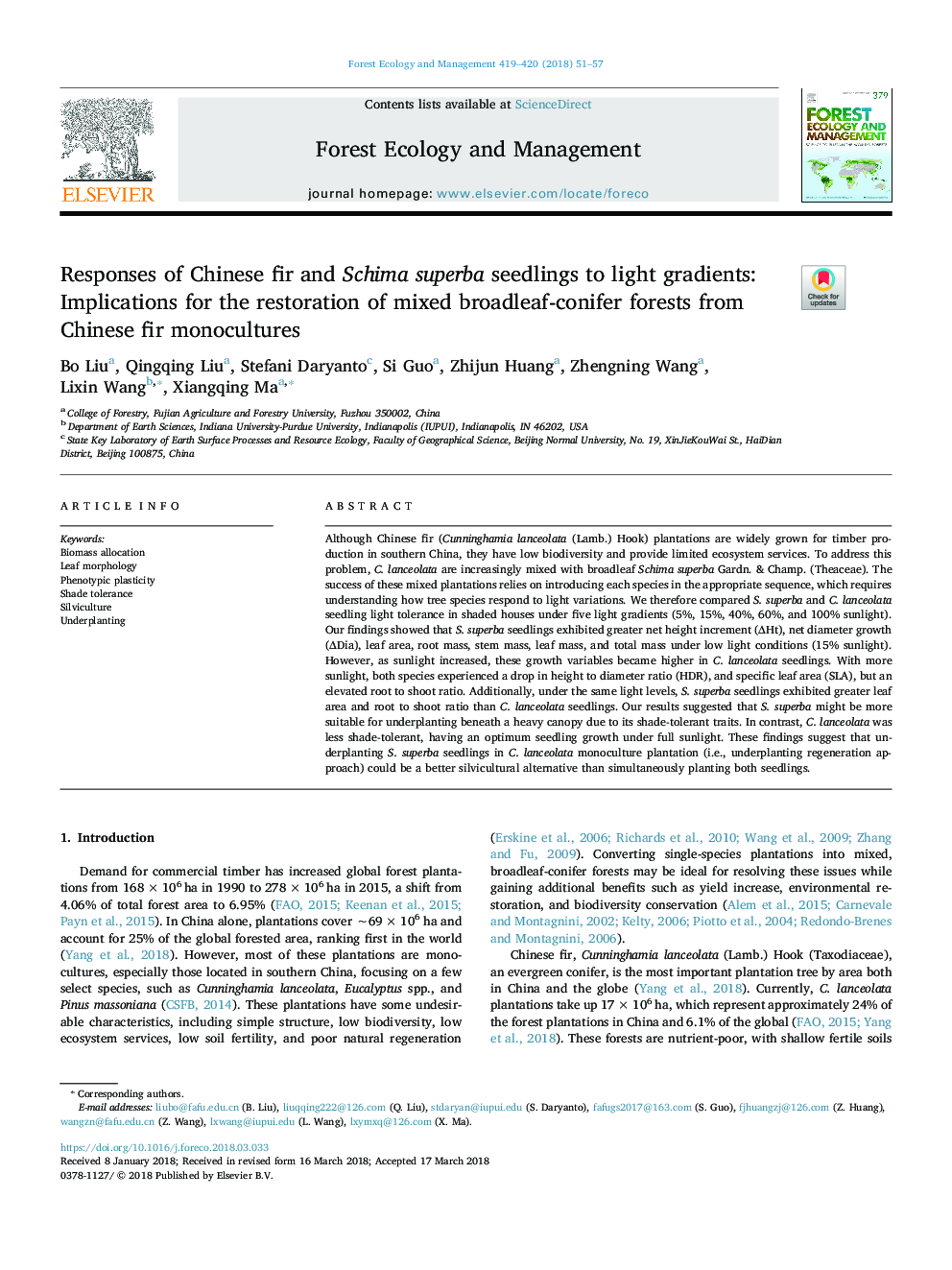| Article ID | Journal | Published Year | Pages | File Type |
|---|---|---|---|---|
| 6541704 | Forest Ecology and Management | 2018 | 7 Pages |
Abstract
Although Chinese fir (Cunninghamia lanceolata (Lamb.) Hook) plantations are widely grown for timber production in southern China, they have low biodiversity and provide limited ecosystem services. To address this problem, C. lanceolata are increasingly mixed with broadleaf Schima superba Gardn. & Champ. (Theaceae). The success of these mixed plantations relies on introducing each species in the appropriate sequence, which requires understanding how tree species respond to light variations. We therefore compared S. superba and C. lanceolata seedling light tolerance in shaded houses under five light gradients (5%, 15%, 40%, 60%, and 100% sunlight). Our findings showed that S. superba seedlings exhibited greater net height increment (ÎHt), net diameter growth (ÎDia), leaf area, root mass, stem mass, leaf mass, and total mass under low light conditions (15% sunlight). However, as sunlight increased, these growth variables became higher in C. lanceolata seedlings. With more sunlight, both species experienced a drop in height to diameter ratio (HDR), and specific leaf area (SLA), but an elevated root to shoot ratio. Additionally, under the same light levels, S. superba seedlings exhibited greater leaf area and root to shoot ratio than C. lanceolata seedlings. Our results suggested that S. superba might be more suitable for underplanting beneath a heavy canopy due to its shade-tolerant traits. In contrast, C. lanceolata was less shade-tolerant, having an optimum seedling growth under full sunlight. These findings suggest that underplanting S. superba seedlings in C. lanceolata monoculture plantation (i.e., underplanting regeneration approach) could be a better silvicultural alternative than simultaneously planting both seedlings.
Keywords
Related Topics
Life Sciences
Agricultural and Biological Sciences
Ecology, Evolution, Behavior and Systematics
Authors
Bo Liu, Qingqing Liu, Stefani Daryanto, Si Guo, Zhijun Huang, Zhengning Wang, Lixin Wang, Xiangqing Ma,
